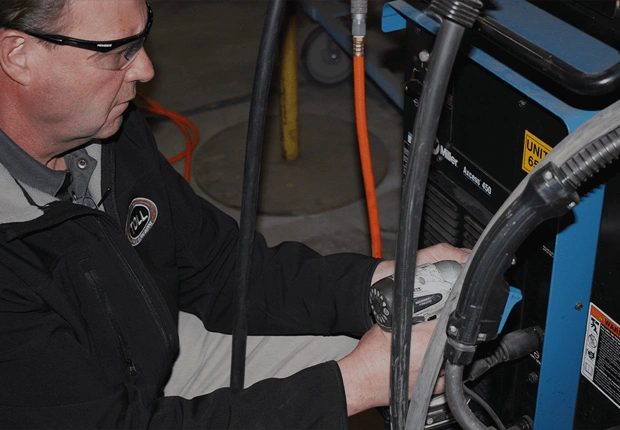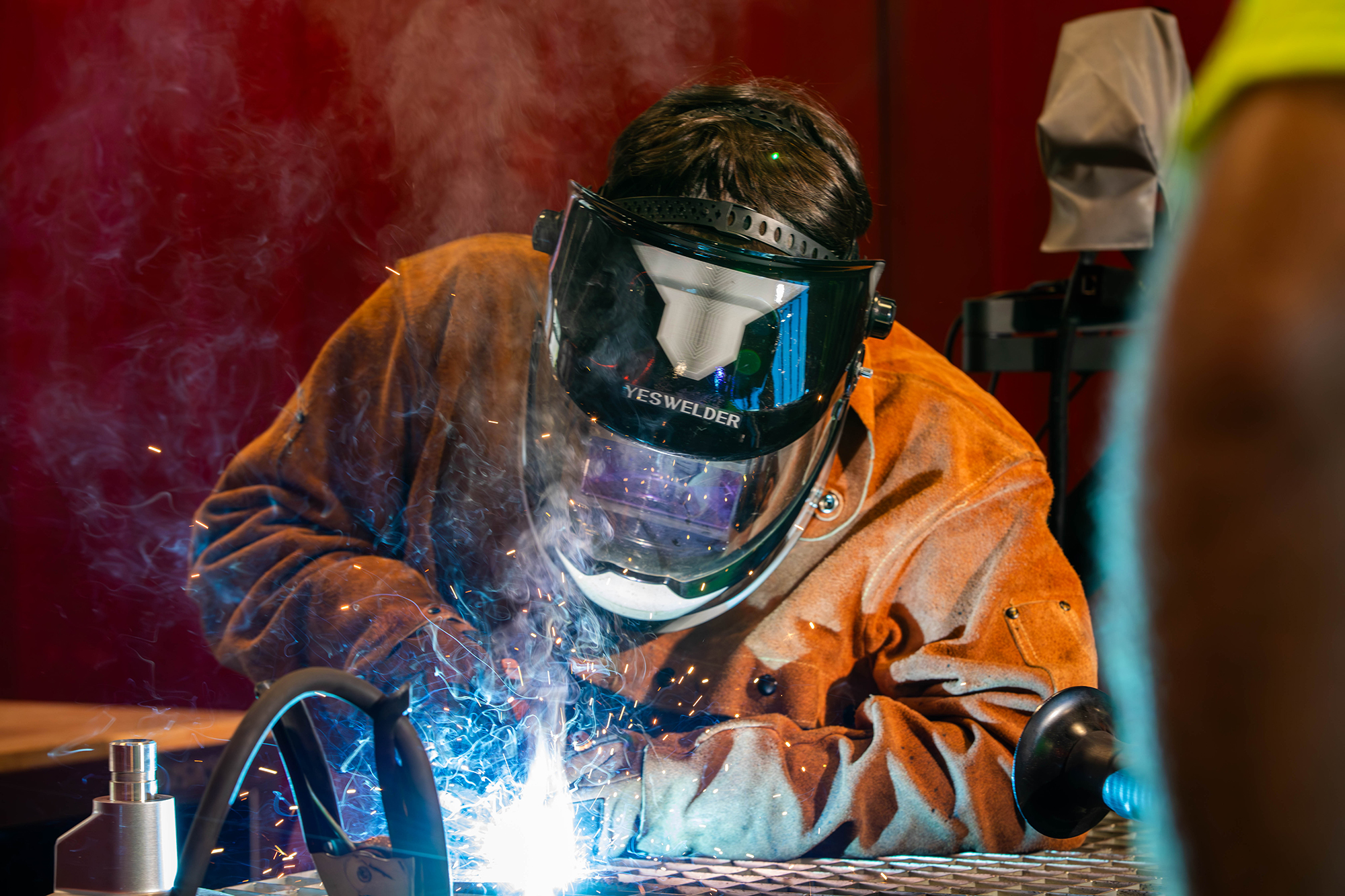Usual Welding Repair Work Issues and How to Address Them Properly
Welding fixings usually run into a variety of problems that can jeopardize the integrity of the last product. Common troubles include poor penetration, porosity, and imbalance, amongst others. Each problem presents distinct obstacles that need particular approaches for resolution. Recognizing these problems is necessary for welders aiming to boost their results and abilities. This conversation will discover these typical welding fixing problems and reliable techniques to address them.
Inadequate Penetration
Insufficient penetration takes place when the weld steel stops working to completely fuse with the base product, resulting in weak joints and possible structural failings. This problem frequently stems from inadequate warmth input, inaccurate electrode angle, or improper welding speed. Welders might run into insufficient penetration because of a mistake of the required criteria for a details material thickness or type. Furthermore, contamination on the base product's surface can prevent reliable bonding, aggravating the trouble. To resolve poor penetration, welders should guarantee appropriate settings on their devices and keep a clean work surface area. Regular examination of welds is suggested to recognize any kind of shortages early, allowing for timely improvements and the prevention of compromised structural honesty in bonded settings up.
Porosity
Porosity is a typical defect in bonded joints that shows up as small gas bubbles trapped within the weld steel. This defect can jeopardize the integrity of the weld, bring about decreased strength and prospective failure under tension. Montana Mobile Welding and Repair Belgrade Fabrication. Porosity usually develops from contamination, wetness, or improper welding techniques, which allow gases to leave right into the molten weld swimming pool. To deal with porosity, welders must guarantee correct surface prep work, keep a tidy workplace, and use appropriate welding criteria. In addition, picking the appropriate filler product and securing gas can mitigate gas entrapment. Routine inspection and testing of welds can assist recognize porosity early, guaranteeing timely restorative actions are taken, thus preserving the quality and reliability of the welded structure
Imbalance
Misalignment in welding can emerge from various variables, including improper setup and thermal expansion. Recognizing the origin is important for efficient resolution. Several modification techniques are available to realign parts and ensure architectural integrity.
Reasons of Misalignment
Welding misalignment typically stems from a variety of underlying issues that can endanger structural stability. One key cause is improper fit-up of parts prior to welding, which can result in gaps and uneven surface areas. Variations in thermal growth during the welding process can likewise result in distortion, specifically if the products being signed up with have various coefficients of growth. Furthermore, poor clamping and fixturing may fall short to hold parts safely in area, causing motion throughout welding. Poorly kept tools, consisting of welding machines and devices, may introduce incongruities in the weld bead, further contributing to imbalance. Lastly, operator mistake, originating from inadequate training or experience, can likewise play a considerable role in producing misaligned welds.
Correction Methods Readily Available
Resolving imbalance successfully calls for a combination of corrective strategies tailored to the particular problems available. One typical method is using jigs or fixtures to hold components in the correct placement throughout welding, making sure constant positioning. Additionally, preheating the products can help in reducing distortion and boost fit-up. For substantial imbalance, mechanical realignment methods, such as using hydraulic jacks or clamps, can be utilized to correct the placement prior to welding. Post-weld heat treatment may also be required to relieve tensions brought on by misalignment. Mindful assessment and change during the setup phase can stop imbalance concerns from becoming substantial issues, promoting a smoother welding process and boosting total architectural stability.
Distortion
Distortion is an usual obstacle in welding that can develop from different factors, consisting of irregular cooling and heating. Comprehending the reasons for distortion is crucial for carrying out reliable avoidance methods. Resolving this issue not only boosts architectural integrity but also boosts the overall top quality of the weld.
Reasons of Distortion
When based on the intense warmth of welding, materials frequently undergo adjustments that can cause distortion. This phenomenon largely develops from thermal expansion and tightening during the welding process. As the weld location heats up, the product expands; upon cooling, it acquires, which can develop interior tensions. Additionally, unequal home heating across a work surface can intensify these stresses, leading to bending or flexing. The type Go Here of material additionally plays a substantial role; metals with varying thermal conductivity and coefficients of development may react differently, leading to unforeseeable distortions. In addition, bad joint style and inadequate fixturing can contribute to imbalance throughout welding, enhancing the possibility of distortion. Understanding these reasons is important for efficient welding repair work and prevention approaches.
Avoidance Techniques
Reliable prevention strategies for distortion during welding concentrate on regulating heat input and making certain correct joint layout. Preserving a regular heat input aids to lessen thermal development and tightening, which can lead to distortion. Making use of strategies such as pre-heating the workpiece can additionally reduce the temperature level slope, promoting consistent home heating. In addition, selecting ideal joint styles, such as T-joints or lap joints, can improve stability and lower anxiety focus. Applying appropriate fixturing to safeguard the work surfaces in location additionally aids in keeping positioning throughout the welding procedure. Finally, staggered welding series can disperse warmth more uniformly, protecting against localized distortion. By applying these techniques, welders can considerably reduce the chance of distortion and boost the total top quality of their welds.
Cracking
Breaking is a common concern encountered in welding fixings, usually resulting from various elements such as incorrect air conditioning rates, material choice, or poor joint preparation. The incident of splits can greatly jeopardize the integrity of the weld, leading to possible failures during procedure. To resolve this concern, welders have to first assess the origin, making sure that products work and suitably picked for the details application. Furthermore, controlling the cooling price during the welding process is important; fast cooling can generate anxiety and bring about fracturing. Proper joint style and preparation likewise add to decreasing the threat. Carrying out these strategies can improve weld high quality and resilience, eventually decreasing the probability of fracturing in finished weldments.

Insufficient Combination
A significant concern in welding repair work is incomplete blend, which occurs when the weld steel does not effectively bond with the base material or previous weld passes - Belgrade Welding. This problem can result in weaknesses in the joint, possibly compromising the integrity of the bonded structure. Factors adding hitbox welder to incomplete combination include inadequate heat input, inappropriate welding method, and contamination of the surface areas being signed up with. To resolve this issue successfully, welders must ensure proper pre-weld cleansing and surface preparation, as well as readjust their welding parameters to attain appropriate penetration and fusion. Normal evaluation throughout the welding process can likewise aid identify insufficient blend early, enabling prompt rehabilitative procedures to improve the overall quality of the weld
Overheating
While welding repair work can boost structural stability, overheating offers a significant difficulty that can lead to product degradation. Too much heat during welding can alter the mechanical residential properties of steels, leading to decreased strength, boosted brittleness, and warping. This phenomenon is particularly essential in high-stress applications where architectural integrity is critical. Recognizing overheating can entail aesthetic evaluations for discoloration or distortion, as well as keeping track of temperature throughout the welding procedure. To alleviate the threats connected with overheating, welders need to use proper strategies, such as regulating warmth input, readjusting traveling speed, and utilizing ideal filler products. Furthermore, implementing pre- and post-weld warmth treatments can aid bring back product homes and enhance the overall quality of the repair, making certain long-lasting performance and safety and security.
Often Asked Concerns
What Are the Common Signs of a Welding Problem?

Just How Can I Examine My Welds for Top quality?
To test welds for quality, one can utilize visual assessments, ultrasonic screening, and radiographic approaches. Each strategy assures architectural stability, determines flaws, and validates adherence to specified criteria, ultimately improving the dependability of the bonded joints.
What Safety and security Safety Measures Should I Take While Welding?
When welding, one need to prioritize safety by putting on ideal individual protective tools, ensuring correct air flow, safeguarding combustible materials away, keeping a clean workspace, and understanding surroundings to prevent injuries and accidents.
Can I Fix a Weld Without Remodeling the Entire Joint?
Fixing a weld without remodeling the whole joint is possible, depending on the damages (Welding). Methods such as grinding, including filler material, or making use of a welding process can effectively attend to details defects while protecting the bordering framework
What Equipment Are Important for Efficient Welding Repairs?
Vital tools for reliable welding repair work include a welding machine, cable brush, mill, safety equipment, clamps, and filler products. Each tool plays a vital function in ensuring top quality and safety throughout the repair service procedure. Porosity normally arises from contamination, wetness, or inappropriate welding methods, which enable gases to escape into the liquified weld swimming pool. Improperly conserved tools, including welding machines and tools, might introduce inconsistencies in the weld bead, further contributing to misalignment. When subjected to the intense warm of welding, materials frequently undertake modifications that can lead to distortion. Breaking is a common problem encountered in welding repair work, often resulting from various aspects such as improper air conditioning prices, material choice, or inadequate joint preparation. A significant issue in welding repair services is incomplete blend, which he has a good point takes place when the weld steel does not adequately bond with the base material or previous weld passes.